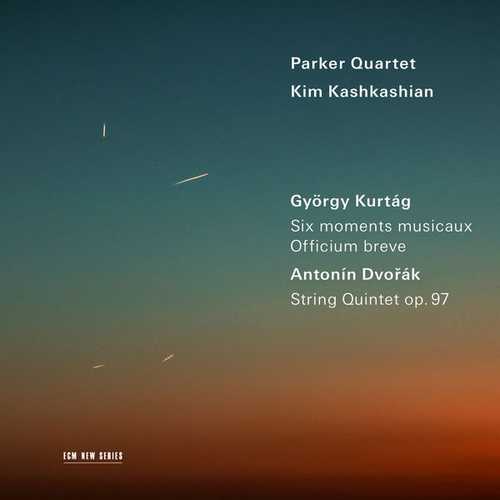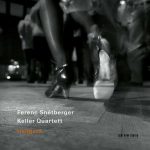

Composer: György Kurtág, Antonín Dvořák
Performer: Parker Quartet, Daniel Chong, Ken Hamao, Jessica Bodner, Kee-Hyun Kim
Format: FLAC (tracks)
Label: ECM
Catalogue: 4855985
Release: 2021
Size: 1.09 GB
Recovery: +3%
Scan: yes
Kurtág: Moments musicaux (6), Op. 44 for string quartet
01. 1. Invocatio [un fragment]
02. 2. Footfalls … mintha valaki jönne …
03. 3. Capriccio
04. 4. In memorian Gyoergy Sebeok
05. 5. … rappel des oiseaux … [étude pour les harmoniques]
06. 6. Les adieux [in Janáčeks Manier]
Dvořák: String Quintet No. 3 in E flat major, Op. 97 ‘American’
07. 1. Allegro non tanto
08. 2. Scherzo, Allegro vivace
09. 3. Larghetto
10. 4. Finale, Allegro giusto
Kurtág: Officium breve in memoriam Andreae Szervánsky, Op. 28
11. 1. Largo
12. 2. Più andante
13. 3. Sostenuto, quasi giusto
14. 4. Grave, molto sostenuto
15. 5. (Fantasie über die Harmonien des Webern-Kanons) Presto
16. 6. (Canon a 4) Molto agitato
17. 7. Canon a 2 (frei, nach Op. 31 / VI von Webern) Sehr fliessend
18. 8. Lento
19. 9. Largo
20. 10. [Webern: Kanon a 4 (Op. 31 / VI)]
21. 11. Sostenuto
22. 12. Sostenuto, quasi giusto
23. 13. Sostenuto, con slancio
24. 14. Disperato, vivo
25. 15. Arioso interrotto (di Endre Szervánszky) Larghetto
At first glance, the pairing of the two composers chosen by the Parker Quartet and violist Kim Kashkashian for their recording on ECM New Series may appear unusual. However, György Kurtág and Antonín Dvořák have more in common than a fleeting glimpse at their oeuvre – an extremely narrow, concentrated catalogue of works in the one case and a multifaceted life’s work that lavishly encompasses all musical genres in the other – would suggest.
There is no question that György Kurtág and Antonín Dvořák are creators of eminent chamber music works. Dvořák wrote thirty-one works in this field (not counting the two serenades and some lost pieces), the most generously represented genre being the string quartet with fourteen works, in addition to the three quintets, one sextet, two tercets and others, all intended for pure string ensembles. Even greater still is the proportion of chamber music works in Kurtág’s oeuvre, although his orchestral works were often written for smaller ensembles and reduced instrumentations. Ultimately, the intimate, austere quality of chamber music is more in keeping with Kurtág’s artistic nature, who thinks less in terms of large formats, but rather developed his own unique style with sound material reduced to microscopic cells.



